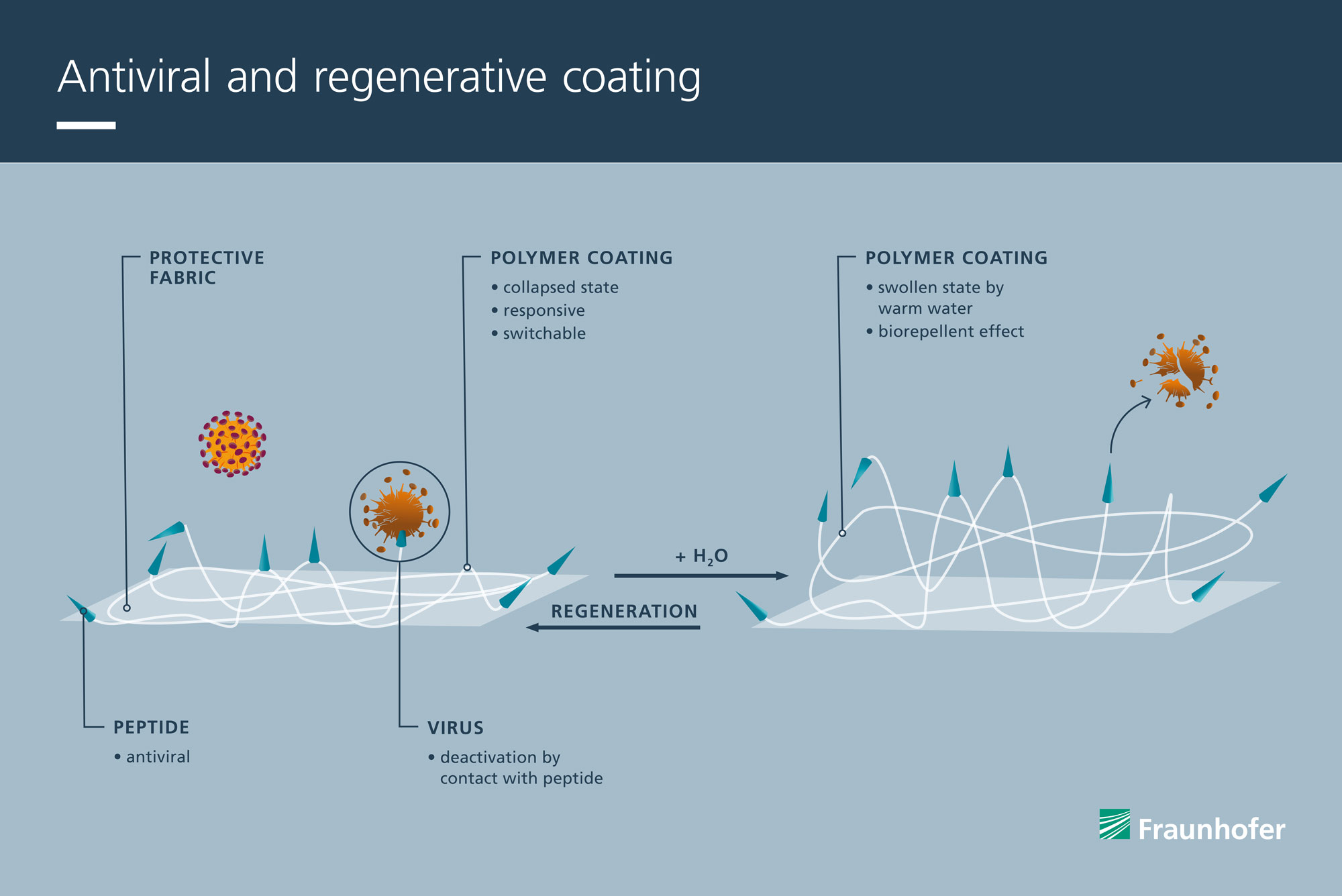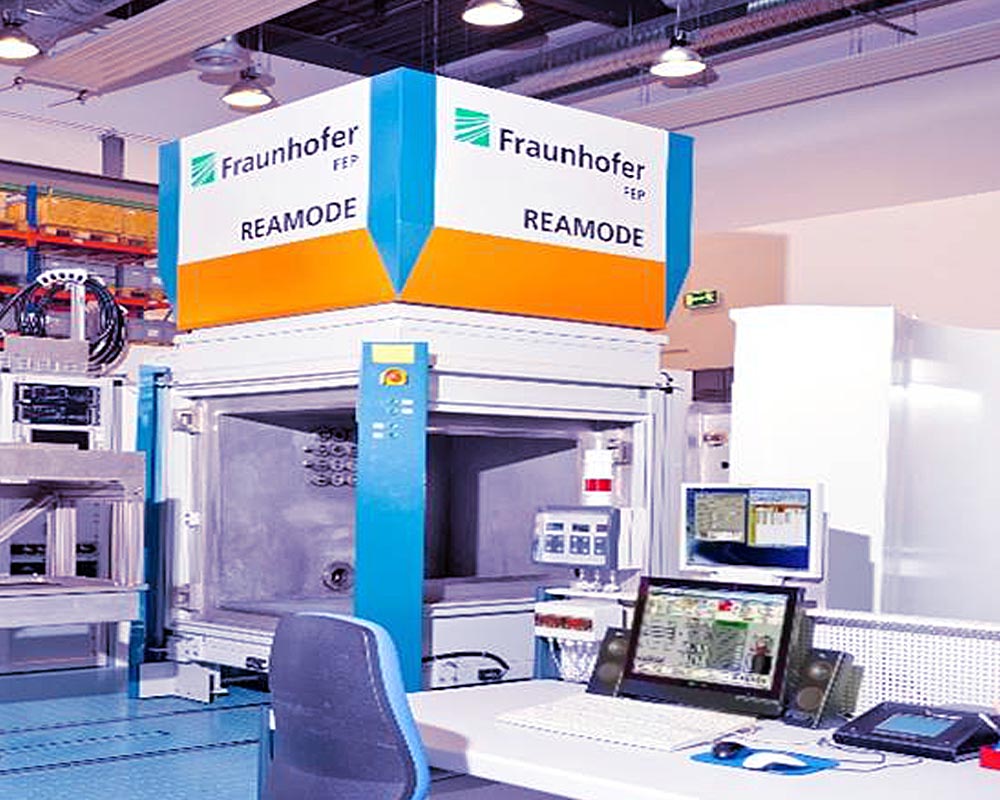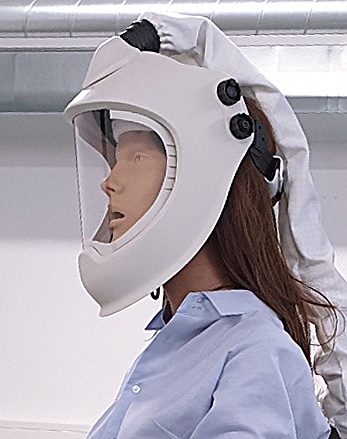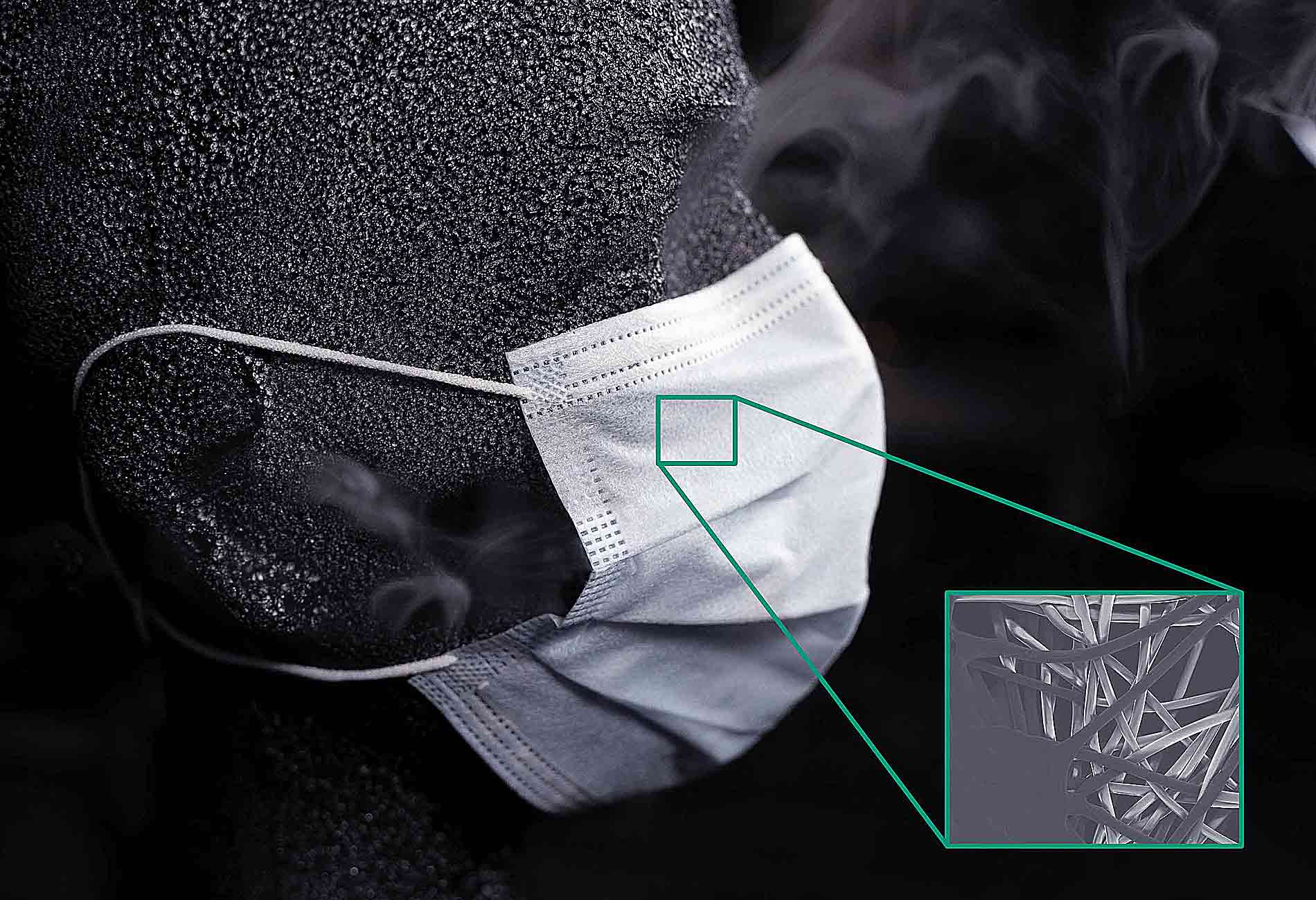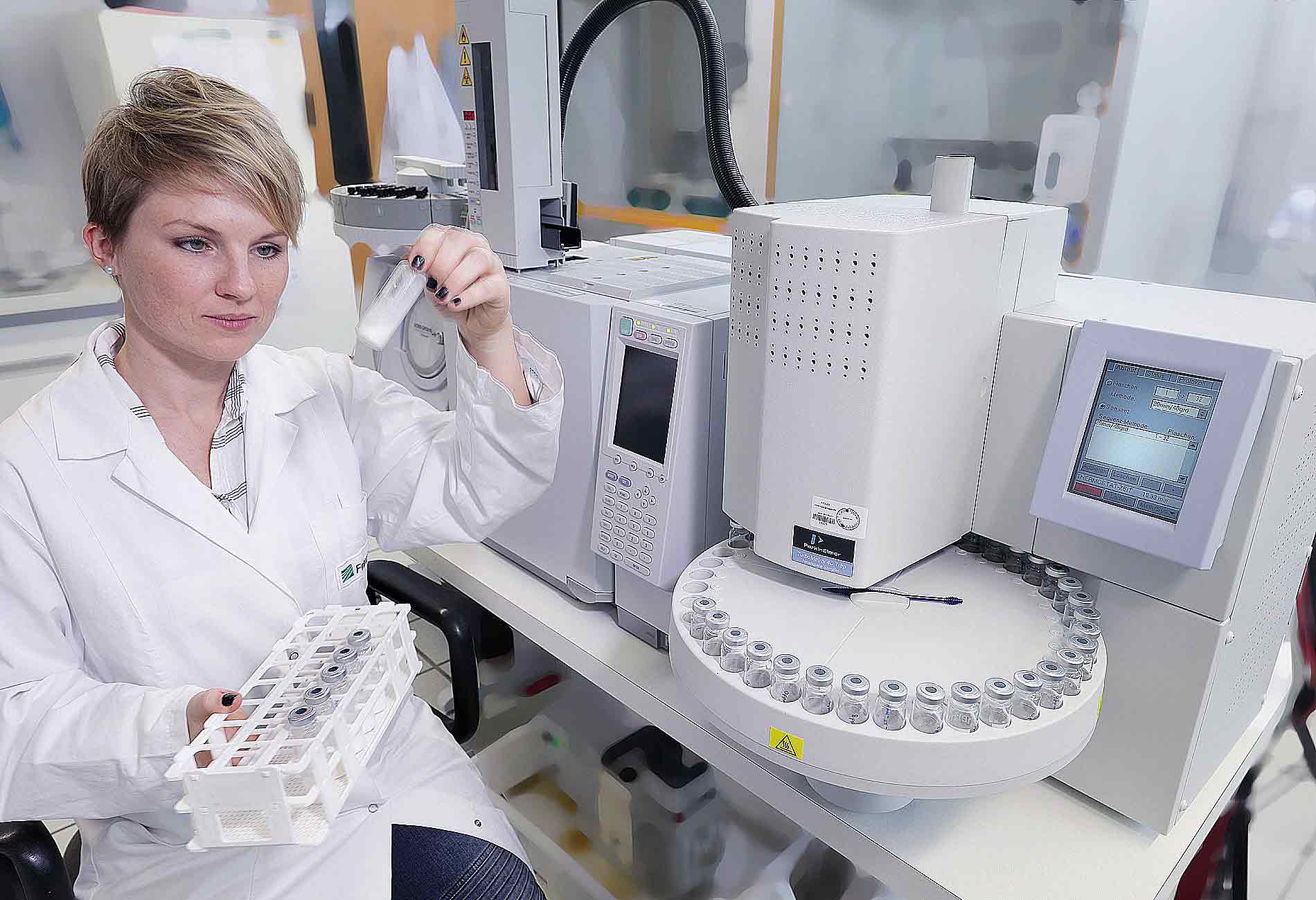The corona pandemic poses numerous problems for our society, and adequate protective equipment plays a crucial role in solving them. The product spectrum ranges from simple FFP1 masks, such as those used in the food industry, to higher-performance FFP2 and FFP3 masks for the medical and care sectors, as well as headgear.
Due to the unexpectedly high demand in the initial phase of the pandemic, considerable bottlenecks occurred in all product groups, which were also exacerbated by insufficient production capacities in Germany and the EU. The rushed or accelerated changeovers at EU companies and hastily expanded imports, often led to highly variable product quality, which had a negative impact on safety, but also on wearing comfort.
Project »Next Generation Schutztextilien«
To defend against pandemics, Fraunhofer is pooling expertise from different disciplines to bring together innovative materials, production and testing methods. The goal is to make safe and comfortable protective equipment available.
The "Next Generation Schutztextilien (German for protective fabrics), NGST" project addresses these challenges and offers solutions ranging from the development of materials to prototypes of high-quality protective fabrics. These open up a wide range of possible applications and, in the event of future pandemics, can contribute to better preparedness and optimal protection, of both the general population and especially exposed persons, such as care personnel.

